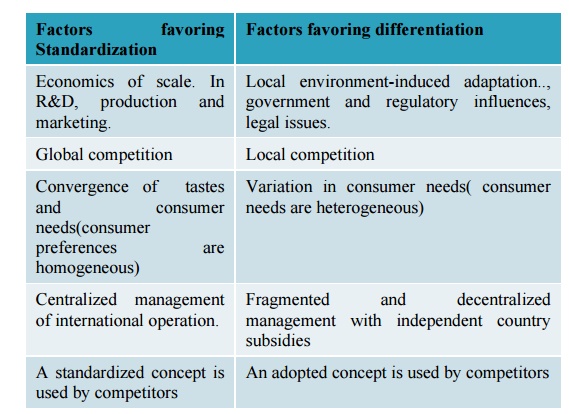Chapter: Business Science : International Business Management : International Strategic Management
Strategic Compulsions - International Strategic Management
INTERNATIONAL STRATEGIC MANAGEMENT
Frame work for International Strategic Management
International
strategic management builds on five phases of planning and analysis that
provide a framework for deploying resources and a plan of action.
Recognizing
antecedents
External
and internal analysis Strategic analysis and choice
Leveraging
competitive advantage and process
Implementation
and integration
International strategic planning
International
strategic planning is a process of evaluating the internal and external
environment by multinational organizations, through which they set their
long-term and short-term goals and then they implement a specific plan of
action in order to achieve those objectives.
STRATEGIC COMPULSIONS:
It means
that the companies face the compulsion to be global if they want to gain the
global market and more values. But in the modern context strategic management
faces many compulsions. The present and future development of the field of
strategic management is likely to be driven by compulsions like contemporary
developments in social and economic theory and recent changes in the nature of
the business and economic context.
International/global strategic management
Strategic
management is the process of systematically analyzing various opportunities and
threats vis-à-vis organizational strengths and weaknesses, formulating and
arriving at strategic choices through critical evaluation of alternatives and
implementing them to meet the set objectives of the organization.
Area of strategic compulsions
Orientation for globalization
Emerging E-commerce and Internet culture
Cut-throat competition
Diversification
Active pressure groups
Motive for corporate social responsibility (CSR)
and ethics.
STANDARDIZATION VERSUS DIFFERENTIATION:
According
to Levitt, represents local marketing versus global marketing and focus on the
central question of whether a standardized (global) or a differentiated
(local), country-specific marketing approach.
Perspectives on standardization versus Differentiation:
Regional
perspective
Marketing
process prospective
Marketing
components/marketing mix perspective.
Factors Favoring Standardization and
Differentiation

STRATEGIC OPTIONS:
Strategic
options/choice involves the selection of a strategy or set of strategies that
helps in achieving organizational objectives.
Global
strategy
International
strategy
Transactional
strategy
Multi-domestic
strategy
Global
strategy: It views the world as a single market. Tightly controls global operations from headquarters to preserve focus on
standardization.
International
strategy: In this strategy company extends marketing, manufacturing and other activities outside the home country.
Multi-domestic
strategy: the international company discovers that differences in markets around the world demand an adaptation
of its marketing mix in order to succeed.
Transactional
strategy: this is company that thinks globally and acts locally. The transactional corporation is much more
than a company with sales, investments and operations in many countries.
Factors affecting strategic options:
External
constraints
Intra-organizational
forces and managerial power-relations
Values
and preferences and managerial attitudes risk
Impact of
past strategy
Time
constraints in choice of strategy.
Information
constraints
Competitor’s
reaction
Related Topics